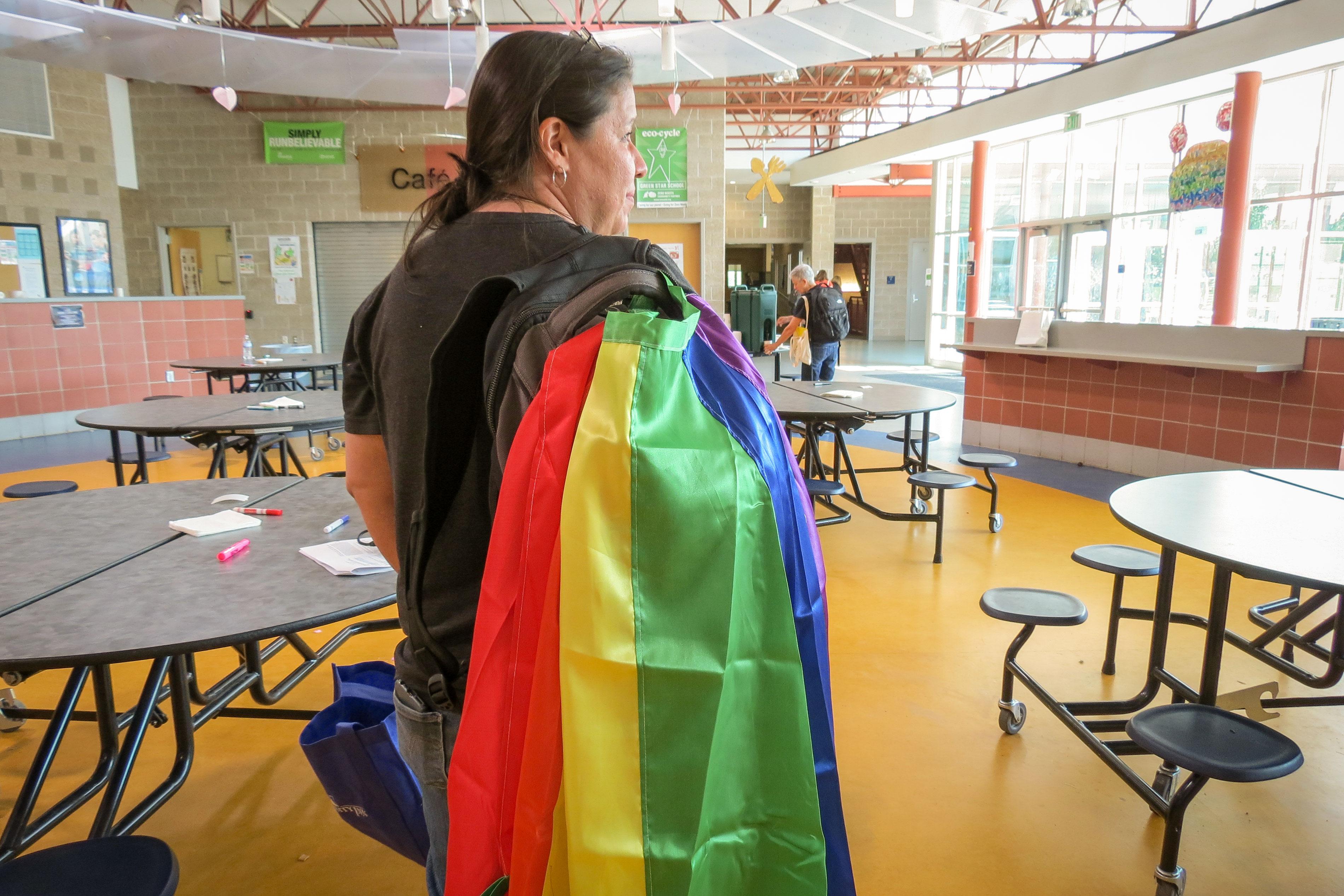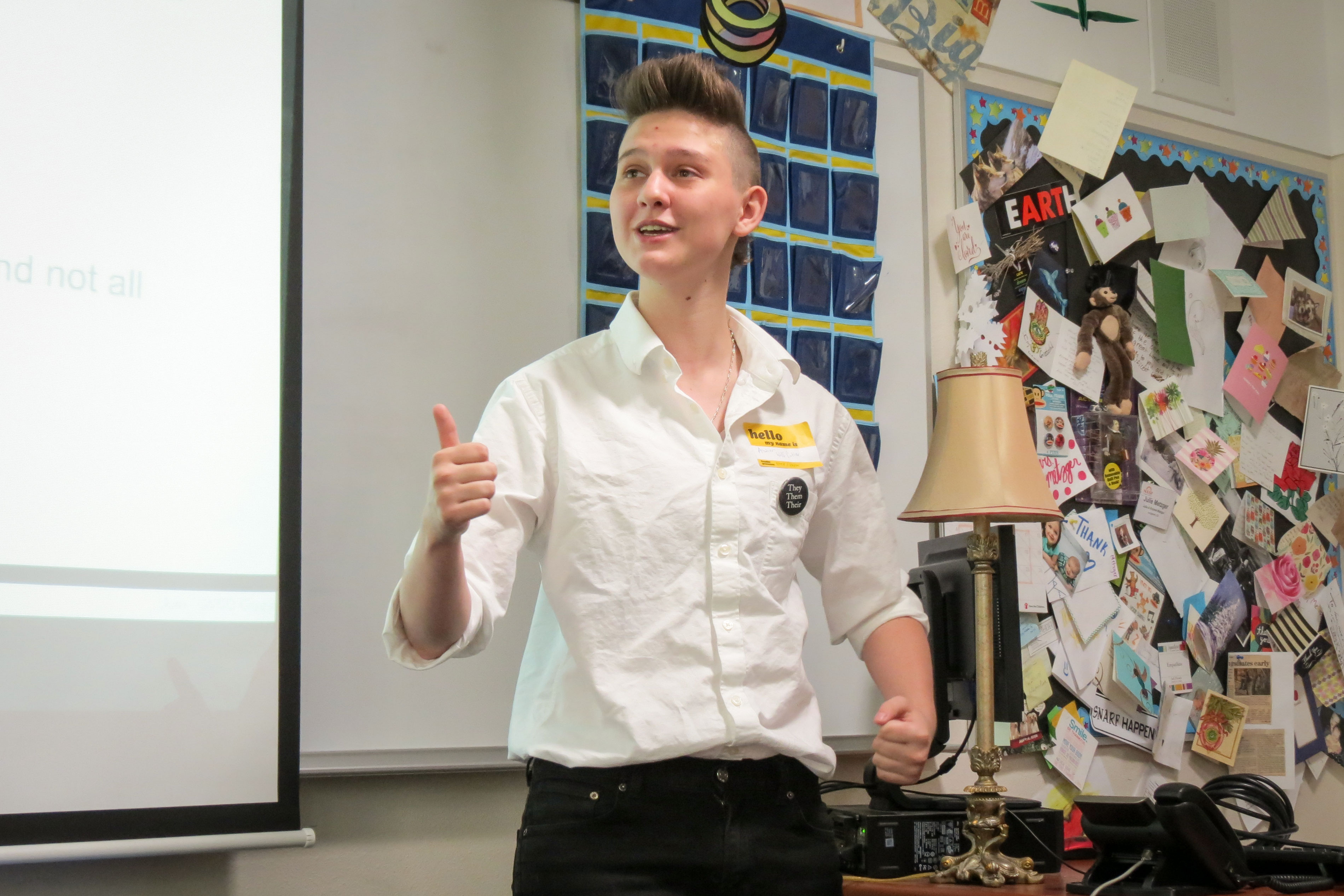

The second standard of the six that Colorado teachers are supposed to follow is to make their classrooms a safe and inclusive environment for a diverse population.
But when it comes to LGBTQ students and those who don’t identify as male or female, many teachers say they’re lost. They fumble around, don’t know how to respond when a student doesn’t use a “him” or “her” pronoun, or they don’t confront anti-gay bullying.
A new generation is redefining the meaning of gender identity and sexuality and teachers haven’t caught up.
“When they realize, ‘I don’t know what I’m doing,’ [do] you know how vulnerable it feels?” asked Bethy Leonardi, a former classroom teacher and co-founder of a Queer Endeavor, an initiative housed at the University of Colorado Boulder School of Education. “It’s a big deal. They need support.”
In order to prepare teachers to navigate these topics of gender identity and orientation in the new school year, Queer Endeavor and Boulder Valley Schools hosted the inaugral LGBTQ-Inclusive Educational Practices Institute in June. The 2-day Boulder conference brought together more than 100 educators from 15 school districts to support inclusive curriculum and share resources and practices to support transgender and gender-expansive youth.
In deference to Colorado’s teacher standards, Leonardi said that by “supporting LGBTQ students, you're actually doing your job.”
It’s a significant number of students.
The 2017 Health Kids Colorado survey found 8 percent of teens identified as bisexual, nearly 5 percent were unsure of their sexual orientation and 2.5 percent gay or lesbian. In terms of gender identity, 95 percent identified with the sex they were assigned at birth (cisgender), about 1 percent was transgender, and another percent was unsure.
Just hours into the conference, health and physical education teacher Lisa Durant had already mastered some new terminology. “C-I-S, binary, non-binary, the umbrella of transgender, pangender,” she reeled off.

Hailing from the Adams 12 Five Star district in the north Denver suburbs, Durant said her students were using words like “asexual, or gender fluid, and I had no idea what they were talking about.”
She also remembered a student who arrived from another district after intense bullying. Later, the student took time away from school and transitioned from male to female during that time. The student informed Durant which pronoun she wanted to be called by and they talked about the lesson material she’d missed.
Durant looks back at the interaction with regret. She didn’t ask “‘how can I support you, what do I need to do to make you feel more comfortable in a group setting in this classroom?’ I just didn't know the questions to ask. ”
And sometimes, not knowing how to support or validate students can end up hurting them.
In Colorado, LGBTQ kids report rates of electronic bullying that are at least double that of heterosexual or cisgender youth. Bullying victims, whether in person or through social media, chat or online, often are found to miss classes or even consider suicide.
Durant has already committed to visiting her school’s gay straight alliance club to let students know who she is and learn who they are. The veteran teacher is also hopeful her district will soon provide clarity and curriculum on what she can talk about in class.
Teachers at the conference gleaned other tips: Avoid using “ladies and gentlemen,” “boys/girls” and otherwise gendered language to address students. Other creative non-gendered ways to address them include: “scientists, readers, athletes, writers, artists, scholars, awesome-sauces, etc.”
Teacher Kari Allerton had always lived the mantra that it doesn’t matter who you love or how you identify, “you’re all my students and I love you all,” but after an institute session where they watched the short film “Breaking the Silence,” she had an insight.
“Saying [to a teenager] that I don’t care if you’re gay or straight or trans, it’s almost like when people say ‘I don’t see color,’” she said, it’s dismissing them instead of “validating and seeing them.”
She remembered a young male student who, by the end of the school year, sported earrings, pink hair, and lipstick “and I didn’t say anything to him.” Many teachers struggle with what to say. A fellow teacher suggested: “It’s so much fun watching you become who you are.”
Allerton agreed and said she “can do a better job validating the beautiful people that they blossom into at our school.”
Queer Endeavor’s Sara Staley,who is also a research associate at CU Boulder, asked teachers to imagine LGBTQ students walking into their classrooms this fall.
“How does that change the way that you call role, how does that change the posters that you put on the wall, the kinds of books and stories you choose to read, who becomes really visible in your curriculum and whose, whose voices are left out,” Staley asked.

Boulder science teacher Jack Ganse has been working on these issues for several years. It’s delicate work. In sixth grade he introduces students to the ‘isms’, like racism, sexism and words like homophobia.
Books like “Red: A Crayon’s Story,” which is about a blue crayon’s identity crisis when its mistakenly identified as red, are part of the process.
“It makes the invisible visible and suddenly you're getting a lot more of like, ‘Whoa, I never noticed all the things that people are saying,” Ganse said.
Gradually, students discuss what they can do about the comments. The conversations initially can be messy, Ganse said, some kids may be uncomfortable, even resistant. But Ganse gently helps the class work through topics in ways that make them comfortable.
Science teacher Meghan Mosher told her fellow educators at the conference that science class is a great place to teach, as Scientific American calls it, the new science of sex that shows “to varying extents, many of us are biological hybrids on a male-female continuum.”
Every time a prefix like “cis, trans, hetereo, homo, and bi” comes up, Mosher talks about what those terms really mean. Lessons on X and Y chromosomes often provide a safe space to answer kids’ questions.
And for all educators, Mosher said class time should be used as a time to talk about what’s appropriate and what’s not.
“I still hear ‘that’s so gay,’ so frequently from my students,” Mosher said, referring to an anti-gay slur. “It was like putting little fires out and then finally I addressed it as a classroom, brought my own identity into it, and that was the thing that ended it.”

A familiar complaint among LGBTQ students is that many teachers — including some who attended the conference — don’t intervene when students are being bullied or when classmates utter slurs. Recent high school graduate Asher Cutler, who identifies as “gender fluid,” said teachers’ fears are understandable, but made this plea to those in attendance:
“Don't fear that. Go for it, please. Your role as an authoritative figure means that you can save someone's life. Teachers are mandatory reporters; they have to report things like self-harming. And these comments are the little things that build up over time and you have to, as a teacher say, ‘no, we don't talk like that in my classroom.’”
Cutler said that when a teacher makes their classroom a safe place where a student isn’t bullied for an hour out of the day, “that is so important.”
Erin Mohat, an elementary school psychologist in Jefferson County Schools, came to the conference to become better informed.
She’s heard from adults who say it’s not appropriate to talk about gender identity with children. But even at the elementary school level, she’s had children come out to her or tell her they were questioning their identities.
She learned a phrase at the conference and wrote it down.
“‘Families and children’s identities are not controversial,’ she said, looking at her notebook. “So that’s what it comes down to. They’re children, but they know. It’s important that we validate and acknowledge that experience because they do. We need to make sure that schools are a welcoming space for everyone.”









